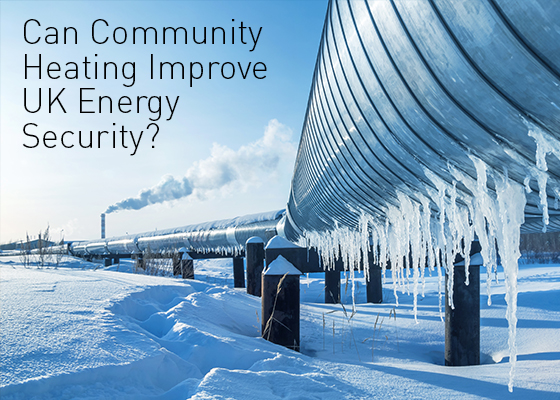

We explore the role community heating systems play in the UK’s energy security now and in the future.
In the midst of a cold snap, UK electricity demand hit its highest level this winter, serving to highlight the precarity of Britain’s energy security, a problem which also hit the headlines at the tail end of last year as October saw spare electricity capacity fall to a seven-year low of 4% due to generator closures and breakdowns.
What are the consequences?
Energy security can be defined as the uninterrupted availability of energy sources at an affordable price. When this is threatened, the results can prove costly, both economically and socially.
- The 2003 blackout in the USA and Canada affected 50 million people, and the estimated economic cost reached $6.4 billion.
- Limited energy capacity also means limited growth, with projected increases in demand in UK cities exceeding capacity levels.
- In 2014 an estimated 2.33 million UK households were in fuel poverty, leaving more than 10% of households struggling to stay warm and stay above the poverty line.
When the price of oil quadrupled in 1973, Denmark, a country which relied on imported oil for 90% of its energy, found itself in a desperate situation. Factories were forced into temporary shutdown as street lights were switched off and the population suffered a desperately cold winter in their homes.
Denmark quickly learnt from this experience and worked to increase energy security, aligning the national energy policy behind renewables, efficient energy use and, importantly, district heating networks, which now supply heat to 63% of Danish households.
How can heat networks help?
Heat networks are a way of making better use of the energy we generate, a lot of which is lost as excess heat. These community heating systems allow one or more centralised sources of hot water to provide consumers - be they residential, commercial or industrial - with a plentiful supply of low-cost heating and hot water.
The source of heat can vary, from power stations to gas-fired CHP units, or even the harnessing of heat that would otherwise be wasted in industrial processes or waste incineration. By sharing one central source of heat, great economies of scale can be achieved, resulting in lower heating and hot water bills for consumers which helps alleviate fuel poverty and, vitally, generates efficient energy using less fossil fuels.
Steps towards security
The UK has a lot of catching up to do in terms of making use of community heating systems, but this has at least been recognised by the Government. Access to funding is no longer a huge barrier - the Government has offered local authorities £7m to invest in district heating schemes and 50 have taken up the offer - and the expertise is readily available.
With national targets for connections to heat networks set at 20% by 2030 and 40% by 2050 - currently less than 2% of the UK’s heat demand is met by community heating systems - the role these networks can play in increasing energy security has been recognised. By developing and implementing more community heating projects, the UK will begin to take some of the strain off its capacity margins and move towards a more secure future.


